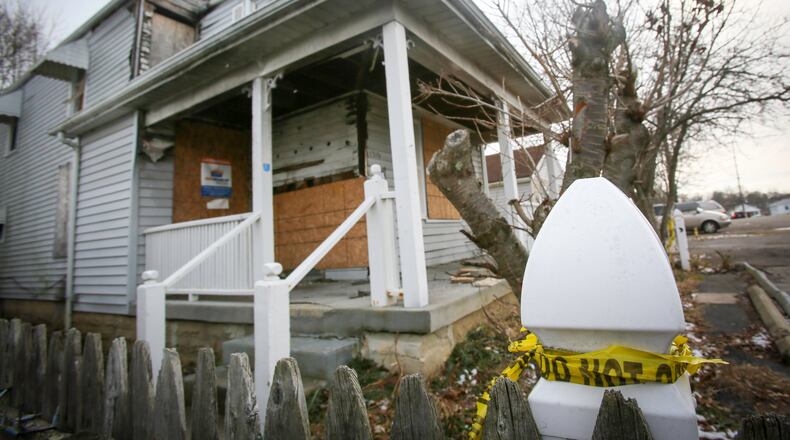International Association of Fire Fighters Local 20 this month complained to Hamilton City Council that parts of a report prepared by members of their union and fire department leadership were removed before it was made public in March, leading three union members to refuse to sign the final report.
The city said it destroyed the deleted parts, mainly involving emergency response times and staffing levels, because it was a draft form. Officials also told the Journal-News if they had the draft, they wouldn’t release it anyway because of attorney-client privilege.
Local 20 President Tony Harris told this media outlet he has a copy of the draft report that includes the removed parts, but he promised former Fire Chief Steven Dawson he would not release it. He will not break that pledge, he said.
The current fire chief, Mark Mercer, who removed the controversial parts of the report, said he would not absolve Harris of his pledge to Dawson to keep the deleted parts to himself, because they were inaccurate.
“I’m the one that’s got to put my name on it, and I’m not putting my name on something that I don’t believe to be accurate,” Mercer said.
If accuracy were the problem, Harris responded this week, “the committee should have been given a list of any and all errors and had the job of correcting those errors.”
But, Harris added, “The changes in question were far more than errors.”
Mercer also said some deleted parts were irrelevant factors in the death of Wolterman, 28, a graduate of Roger Bacon High School who had married seven months earlier.
Through a public records request, the Journal-News obtained some deleted parts that had been sent via email. Those discussed recommended national standards for fire response times and the need for quicker response by a Rapid Assistance Team (RAT) officer.
Mercer said while a RAT officer has the job of performing a 360-degree evaluation of a building that is on fire, “this duty is also the responsibility of the first-arriving officer. Plain and simple, the size-up was not done correctly.”
Mercer himself was the RAT officer that night. He was off duty and it took him about 40 minutes to arrive at the blaze.
Mistakes were made, Mercer said in an interview this week.
In one error that could have saved Wolterman’s life, a now-retired fire lieutenant heard over his radio a transmission that perhaps no other firefighter heard: the fact a police officer saw fire in the basement.
The lieutenant heard fire was in the basement, “and he went and verified that it was a basement fire, before Patrick went in the front door,” Mercer said. “And he didn’t say a word about it.”
“When we look at the RAT assignment and say, ‘Somebody else would have found that fire,’ be really clear: Somebody else did find that fire, before Patrick walked in the front door…. He heard about it (on his radio), and went and verified it, and then didn’t communicate it.”
“I don’t sleep because of this,” Mercer said. “There are days when I sit and think about this, and what difference that would have made.”
Every fire officer has since received more training about such issues, he said. Harris agreed training, which was “severely lacking” before Wolterman’s death, has improved.
The first anyone with the city knew there was a fire was at 1:03 a.m., when a burglar alarm shorted out, alerting police. They responded, and called for firefighters, who showed up at 1:17 a.m. Nobody entered the building until 1:23 a.m.
The old, rough-cut, 2-by-8-inch floor joists would be expected to burn through in 18.1 minutes for a standard fire — and faster in a gasoline-fueled fire with wind blowing behind it, he said.
When Wolterman went inside, “he didn’t take two steps in there,” Mercer said. “It wasn’t almost burnt through. It was burnt through. He immediately fell into the basement.”
Another error was that in the darkness, firefighters failed to recognize that there was “smoke that is so thick and dense that you can’t see past it” when they arrived. That thick smoke was an indication of arson, for which people have been convicted and are serving time.
“They should recognize that it’s something different,” he said. “And if they didn’t see it in the middle of the night, and it’s strong-blowing wind, I get all that.”
The city’s report noted that in nearly four years before Wolterman’s death, firefighters had between zero and two hours per year on strategies and tactics training, and between zero and one hour per year on fire-behavior training, which the report described as “very little.”
Perhaps the biggest factor was the fire was caused by arson.
“The fire was intentionally set in the basement, underneath unprotected floor joists, with the intent to do as much damage to that house as possible,” Mercer said.
“We talk about locating the fire, making sure nobody’s working above it. That duty is assigned to every company officer, when they get to the fire, to do a size-up of the building and a 360-degree survey of it. That was not done well by our first-arriving officer.”
With the strong wind blowing from behind the building, one would expect smoke to be coming from basement doors, “and there was none,” Mercer said. “There was no staining on the siding above it.”
Also, the fire had burned so quickly but had run out of oxygen, so although the floor joists were about 2,000 degrees and sparking, there was no glow from them, he said.
“He wasn’t lazy about it,” Mercer said of the officer.
About the Author
